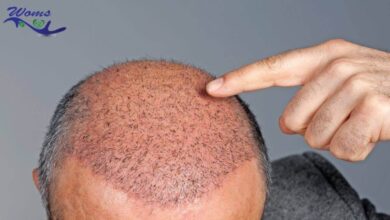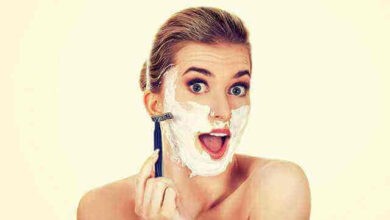
Among life’s awesome paradoxes is how to do blackhead extraction. Okay, maybe it’s more of a challenging task than a myth. You can attempt to scrape them out, but you have a chance to bruise your skin and make the blackhead you just removed seem insignificant.
Thankfully, there is a happy medium when it comes to removing and avoiding blackheads. To find out more, we enlisted the help of specialists.
To begin, it’s important to understand what triggers blackheads. When a cell on your body gets blocked with sebaceous glands, blackheads appear. The pore accumulates dead skin cells and sebum. If the pore isn’t concealed by the epidermis, it reacts with oxygen and turns black when exposed to air. As a result, the term “blackhead” was coined.
Studying how to get rid of blackheads can be life-changing because they can linger if not addressed. If not removed, most blackheads might last for days, weeks, or even months, but little whiteheads normally disappear within a week to ten days. These minor adjustments to your skin-care regimen may be beneficial.
How To Do Blackhead Extraction?
How to do Blackhead extraction has been asked by many people as they want to get rid of it as soon as possible. Some of the ways for Blacjead Extraction are given below:
1. Clean with a soft cleanser
Avoid the urge to attack your blackheads with a scrubby approach. The best option is to use a gentle cleaning product. “It won’t severely dry up your skin, which can lead to an increase in sebaceous glands and worsen the condition.
Consider Cleanser Lotions, which combines glycolic and salicylic acids with humectants glycerol and glucose to aid your body to absorb water.
2. Make your face moist
It’s important to remove and relax the dirt stuck in your skin using steam before attempting an extraction at yourself.
After you’ve taken a bath or washed your face, massage a little coat of your strongest face cream to the region you’re extracting. Moisturizer will form a short-term occlusive layer to hold the steam in your face, making extractions smooth.
Wrap the spot with bubble wrap, then place a warm, wet towel on top. By stacking the hand towels, the steam will be kept in your flesh.
It’s essential to have your epidermis as smooth as possible for the safest extractions and the simplest removal. Consider removing the towels and wrap after some minutes and apply another layer of cream to leave your skin hydrated before beginning your extractions.
3. Do not burst with your fingernails
If you’re extracting with your fingers, the key is to be gentle. Seeing patients who pick, scratch, and extract spots on their skin puts them at risk of permanent scarring. Here’s a quick rundown: Begin by washing your hands well and avoiding getting your fingers too close to the blackhead.
Widen them a little to make it easier for the blackhead extraction from a deeper level within your skin. To make pressing simpler and to prevent leaving marks, move your fingers while pressing.
Place your hands at 3 o’clock and 9 o’clock, then 5 o’clock and 10 o’clock, 2 o’clock and 7 o’clock, and finally two o’clock and seven o’clock. Use your fingers instead of your nails to avoid puncturing your skin.
4. Extraction using a sharp object should be avoided
Some specialists use an extractor tool in the clinic for blackhead extraction, so it’s your safest choice if you want to imitate your ideal glowing skin. Insert the open tips on both sides of the blackhead to use it properly.
Place the bent section of the tweezer tips on your flesh and the tweezer body parallel to where you’re extracting. Carefully squeeze on the blackhead on both sides until it starts to release. Slowly and evenly add pressure, then when you’re ready, lightly pinch the tweezers and lift the blacked-out substance from the skin to extract it.
If the blackhead won’t come out readily, don’t try to extract it anymore. When you’re done, use an antiseptic, alcohol-free moisturizer like her Rapid Response Detox Toner to thoroughly wash your face.
5. Exfoliate on a constant schedule
Exfoliating also helps in Blackhead extraction. Acids are ideal for exfoliating. Chemical exfoliants are preferred by experts over physical exfoliants, so opt for topical treatments and alpha hydroxy acids instead of scrubbing.
Microtears in the flesh can be caused by scrubs. Compounds such as glycolic acid, lactic acid, and salicylic acid should be avoided.
Salicylic acid, which can go deeper into your skin and break the sebum that’s clogging it, is recommended by doctors. It works by keeping pores fresh and clean. Because you can use BeautyRx Skincare Dermstick for Pores to exfoliate tiny, blackhead-prone regions like your nose, it’s a good choice.
6. Try using a pore strip
This ancient but classic is one of the ways for the blackhead extraction in the simplest method possible: by picking them out. The pressure from peeling the patch will bring the trapped dirt to the surface of your skin and have been appropriately cleansed with heated water and the pore is accessible.
They’re not healing the blackheads; they’re just eliminating the top (and most noticeable) layer. Bioré Charcoal Deep Cleansing Pore Strips combine that pore-clearing power with the purifying qualities of charcoal.
7. Always keep your skin moisturized
If oil is a cause of blackheads, ignoring it would simply make matters worse. To avoid blackheads, maintain your skin’s oil levels normal (rather than zero). Although some strong oils, such as avocado oil, might block pores, a lack of oil causes your skin to create more of it, resulting in more blemishes.
Too much blackhead-causing oil can be produced by too dry skin. By keeping your skin’s moisture level regulated, you can ensure a normal discharge of oil from your pores.
Try a moisturizer that contains squalane oil, an emollient that is also non-comedogenic—it’s the best of both worlds.
8. Massage with a topical retinoid
A topical retinoid, such as prescribed tretinoin gel or OTC Differin Adapalene Gel 0.1 percent Acne Treatment, is recommended by Geraghty.
Retinoids are unrivaled in their ability to promote cell turnover, which removes dead skin cells and reduces the risk of clotting. A little layer applied at night can clean your body, unblock pores, lower excess oil, and remove and prevent minor blackheads and whiteheads.
9. Try some gadgets
There are a few instruments that can help you in safe blackhead extraction if your hands aren’t up to the task. A metal comes done extractor, which she employs in the office, is recommended by medical specialists. Skin spatulas that vibrate to help dig debris in your pores are also a great hit with us. Pore vacuums are also available, which suctions the particles from your skin.
However, it’s a good idea to do some study before using one because they can sometimes be overly powerful and cause more harm than benefit. The Lonove vacuum is Gohara’s favorite since it combines gentle pressure and blue light to reduce irritation.
If you have deep skin, though, it’s better to be safe than sorry. Brown-skinned people are more prone to hyperpigmentation as a result of operations. To avoid skin trauma, avoid suction and instead opt for gentle treatments like steam extractions.
10. Use vitamin C
Certain chemicals, including beta hydroxy acids and benzoyl peroxide, are effective at treating acne and congested pores. Your preferred lightning formula, vitamin C, on the other hand, can be quite effective in removing blackheads on the nose.
A blackhead is merely oil that has risen to the surface and become oxidized due to exposure to the air. The oxidation process is what turns blackheads black. Use an antioxidant like vitamin C to combat this process and protect the oil from oxidizing so quickly.
11. Know when to let go of obstinate blackheads
From the beginning, you should just focus on the darkest, most visible blackheads. But don’t panic if one of those dark blackheads does not burst; simply leave it alone.
Triple pushes and you’re done is the standard principle. If it doesn’t come out after three tries, stop otherwise you risk hurting your skin or piercing a capillary. If it isn’t coming out, it isn’t the right moment to remove it.
You can always come back to it later. It’s preferable to create harm. There’s also the possibility that what you think is a blackhead isn’t a blackhead. Deep cysts or milia can appear as blackheads, according to Geraghty, and both require a doctor’s appointment because they need more than a simple extraction.
12. Attempt HydraFacial
If you’re plagued by blackheads, medical experts suggest a HydraFacial, which employs gentle suction to remove stuck dirt before infusing skin with moisture think of it as a more powerful facial. This is an excellent approach to keep pores clean without dehydrating your skin excessively.
Conclusion:
When a cell on your body gets blocked with sebaceous glands, blackheads appear. The pore accumulates dead skin cells and sebum. If the pore isn’t concealed by the epidermis, it reacts with oxygen and turns black when exposed to air
There are various ways to extract blackheads. You can use Vitamin C, Retinoids or pores strips which or follow the trips and facts given above.
FAQS
Are acne strips for blackheads harmful?
Acne strips are difficult to harm your skin. They can, though, cause inflammation and itchiness, particularly in those who have rosacea or psoriasis, or in people who are using prescribed acne drugs.
Is There a Recurrence of Blackheads After Blackhead Extraction?
Although blackheads will still reappear, some blackheads, such as tight inflammatory acne (tiny, non-painful, non-red lumps beneath the skin), may never reappear if they are properly removed.




